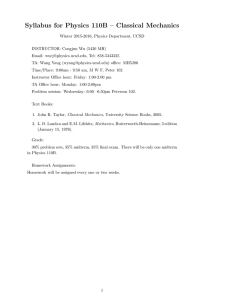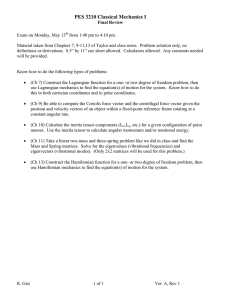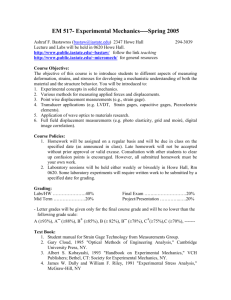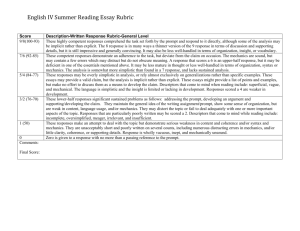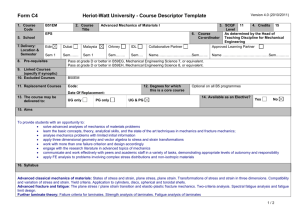Continuum Mechanics – Solids
advertisement
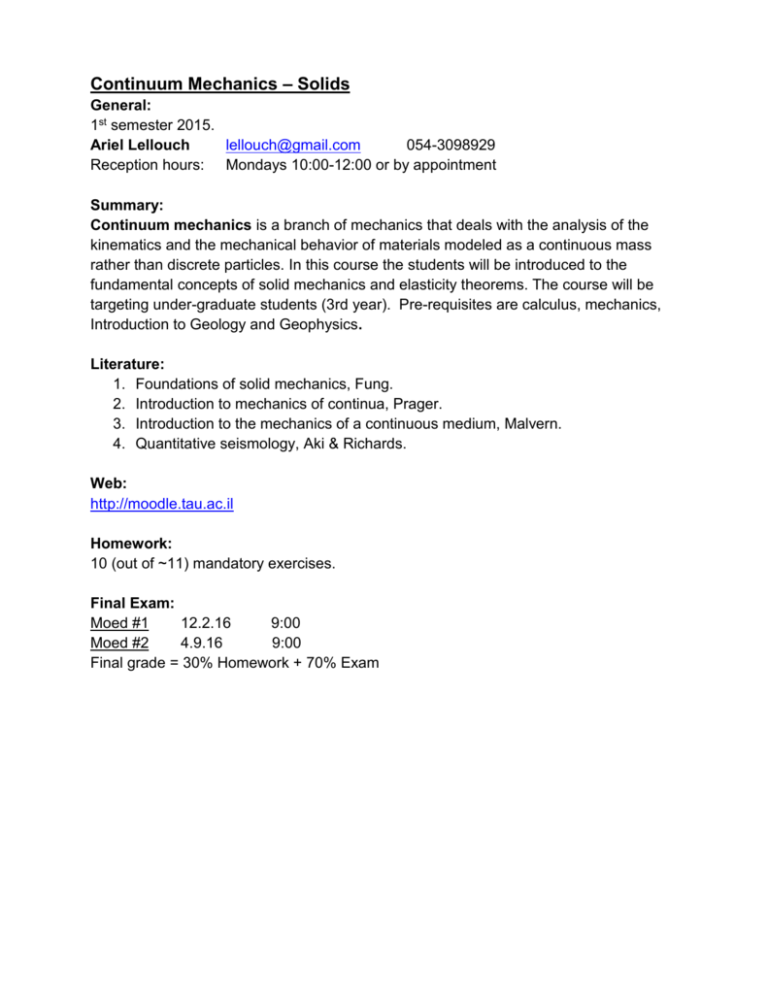
Continuum Mechanics – Solids General: 1st semester 2015. Ariel Lellouch lellouch@gmail.com 054-3098929 Reception hours: Mondays 10:00-12:00 or by appointment Summary: Continuum mechanics is a branch of mechanics that deals with the analysis of the kinematics and the mechanical behavior of materials modeled as a continuous mass rather than discrete particles. In this course the students will be introduced to the fundamental concepts of solid mechanics and elasticity theorems. The course will be targeting under-graduate students (3rd year). Pre-requisites are calculus, mechanics, Introduction to Geology and Geophysics. Literature: 1. Foundations of solid mechanics, Fung. 2. Introduction to mechanics of continua, Prager. 3. Introduction to the mechanics of a continuous medium, Malvern. 4. Quantitative seismology, Aki & Richards. Web: http://moodle.tau.ac.il Homework: 10 (out of ~11) mandatory exercises. Final Exam: Moed #1 12.2.16 9:00 Moed #2 4.9.16 9:00 Final grade = 30% Homework + 70% Exam Course Outline: Introduction: 1. Mathematical Introduction a. Vectors b. Tensors c. Linear Algebra operations 2. Strain analysis. a. Inertial reference frames b. Strain tensor c. Deformation gradient tensor d. Cauchy Green strain 3. Infinitesimal strain. a. Curvilinear coordinates b. compatibility 4. Field equations and conservation laws. a. Mass conservation b. Transport equation c. Body and surface forces d. Linear and angular momentum 5. Stress analysis. a. Stress tensor b. Mohr’s circles 6. Constitutive law. a. Stress-strain linear relation b. Stiffness tensor c. Elastic potential d. Velocity and attenuation in porous media e. Anisotropy f. Long wavelength approximation 7. Wave propagation. a. Acoustic wave equation b. Elastic wave equation c. Body waves d. Surface waves e. Inhomogeneous waves f. Mode conversions g. Green function h. Reciprocity principle i. Rayleigh-Betti representation theorem 8. Anisotropy. 9. Ray theory.
